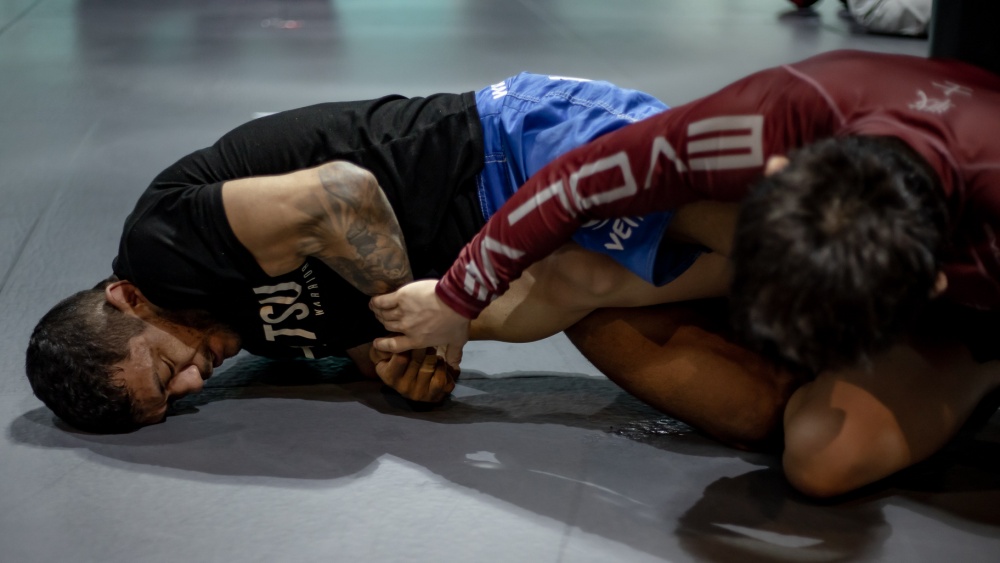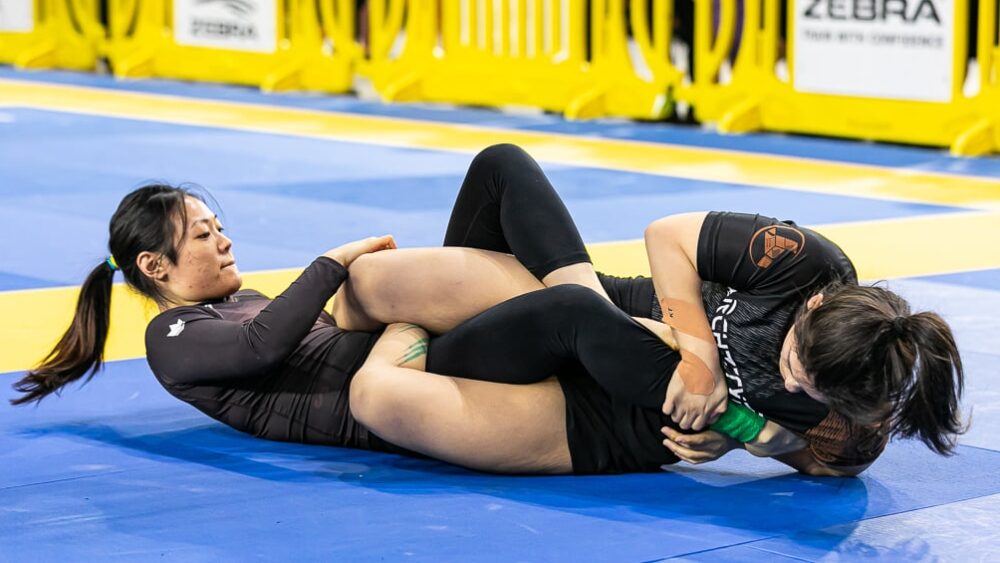Leg locks have exploded in popularity over the last several years in competitive grappling. Although leg locks were once shunned by the BJJ community, their effectiveness has never been in doubt. Given the current popularity of leg locks, no BJJ student can afford to ignore them. In this article, we examine some of BJJ’s basic leg locks.
Leg Lock Rules

Before practicing leg locks in the gym or applying them in competition, you must ensure that you’re familiar with the rules. Leg lock rules will differ by academy, tournament, and division, so be sure to study the rules closely before you begin leg locking your opponents. For example, some academies limit leg locks to upper belts or only permit lower belts to apply certain leg locks. In addition, the leg lock rules in tournaments are usually different for gi and no-gi competitors.
Leg Lock Positions
There are many positions from which leg locks can be applied. Some of these positions are off-limits in certain tournaments and gyms, so, like leg locks themselves, be sure to familiarize yourself with the rules of your gym or the tournament you’re competing in before using these positions. Below are some of the basic leg lock positions that all BJJ students should know.
Ashi Garami: Ashi garami, also known as the single leg x-guard or mono x-guard, is usually the first leg lock position that BJJ students learn. Meaning “leg entanglement” in Japanese, this position involves using your legs to isolate and attack your opponent’s leg.
Outside Ashi Garami: The outside ashi garami involves placing both of your feet outside of your opponent’s legs. This position provides better control than the standard ashi garami position, but it also leaves your feet open for counter leg attacks.
The 50/50 Guard: The 50/50 guard is similar to the outside ashi garami, with the only difference being your opponent’s leg is passed across your body. When the 50/50 is achieved, you and your opponent’s legs are placed in the same position, giving both of you equal offensive and defensive options. However, like the outside ashi garami position, you must remain aware of counterattacks by your opponent.
Inside Sankaku: The inside sankaku, also called the honey hole, 4-11, saddle, and top rock, involves placing both of your legs between the legs of your opponent. This position is similar to the 50/50 in that your opponent’s leg is pulled across your body. However, unlike the 50/50, in the inside sankaku, you position your leg over the leg that you are attacking and under your opponent’s outside leg.
The Leg Knot: The leg knot, also called the game over position, is a position in which your left leg is placed over your opponent’s right leg and under his or her left leg (or vice versa). Your right leg is then hooked over the shin of your opponent’s left leg. From this position, you have complete control over both of your opponent’s legs, leaving you free to attack with multiple leg locks.
Leg Locks
After familiarizing yourself with the leg lock positions above, you’ll be ready to start applying the following leg locks.
Straight Ankle Lock: Also known as the Achilles lock, the straight ankle lock is the first leg lock most BJJ students learn. The straight ankle lock is a great introductory leg lock because it is highly effective and also relatively safe for beginners to apply. This submission is usually applied from the ashi garami position. In order to apply the straight ankle lock, you first circle your forearm over your opponent’s leg. Next, slide the blade of your arm down your opponent’s leg, stopping at his or her heel. Once you’ve achieved this position, fall to your side, look over your shoulder, and thrust your hips forward. This will create immense pressure against your opponent’s Achilles tendon, forcing him or her to tap out.
Knee Bar: The knee bar is another leg lock that all BJJ students should learn. Like the Achilles lock, the knee bar is a safe and effective submission for BJJ beginners. In addition, the knee bar is relatively simple to perform. Part of what makes it easy to learn is that it’s very similar to an armbar, which is one of the first submissions most BJJ students learn. The knee bar works by hyperextending an opponent’s knee past its normal range of motion.
Toe hold: The toe hold is a submission that is generally reserved for those who have a bit more experience in BJJ. This submission involves hyperextending an opponent’s ankle. However, unlike the straight ankle lock, the toe hold is achieved by applying a twisting motion. The toe hold can be applied from multiple positions, making it a great leg lock to have in your arsenal.
Heel hook: No list of BJJ leg locks would be complete without the heel hook. The heel hook has a controversial history in BJJ, as it was disfavored in BJJ for many years. However, given the success that many top grapplers have had with heel hooks in recent years, it has gradually gained acceptance within the BJJ community. In fact, the IBJJF recently legalized heel hooks in no-gi competition for brown and black belts.
Although the name indicates that the submission targets the heel, the move actually uses an opponent’s heel to attack his or her knee. Controlling an opponent’s knee and twisting his or her heel generates tremendous torque at the knee, forcing him or her to submit.
Don’t Ignore Leg Locks
Whether you are a beginner or an experienced BJJ student, you can’t afford to ignore leg locks. Even if you aren’t a fan of leg locks, you must have a basic understanding of how to perform and defend them. If you want to be a complete grappler, leg locks simply must be a part of your repertoire. Or, as famously stated by BJJ coach John Danaher: “Why would you ignore 50% of the human body?”
If you enjoyed this article, you may also like:

















